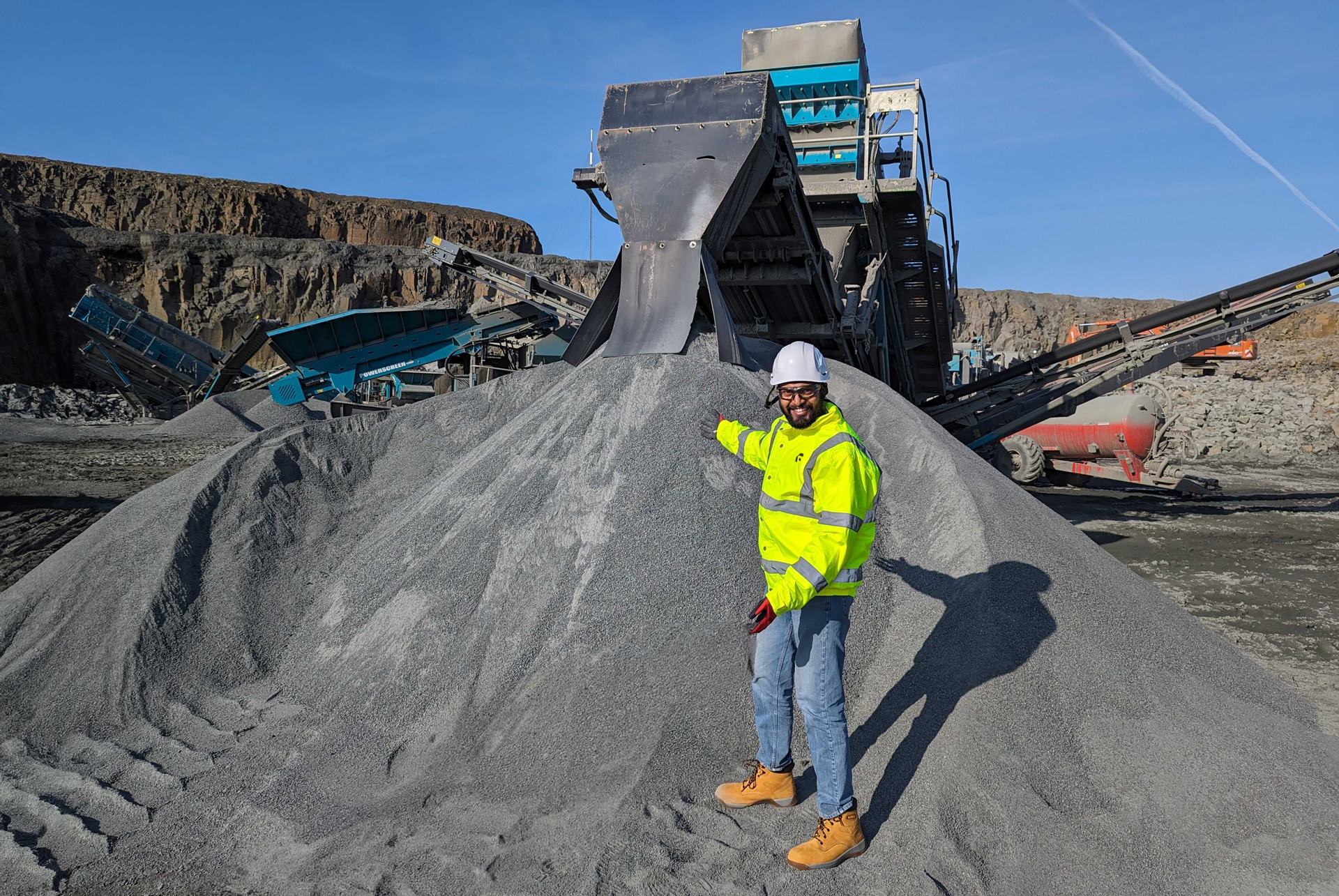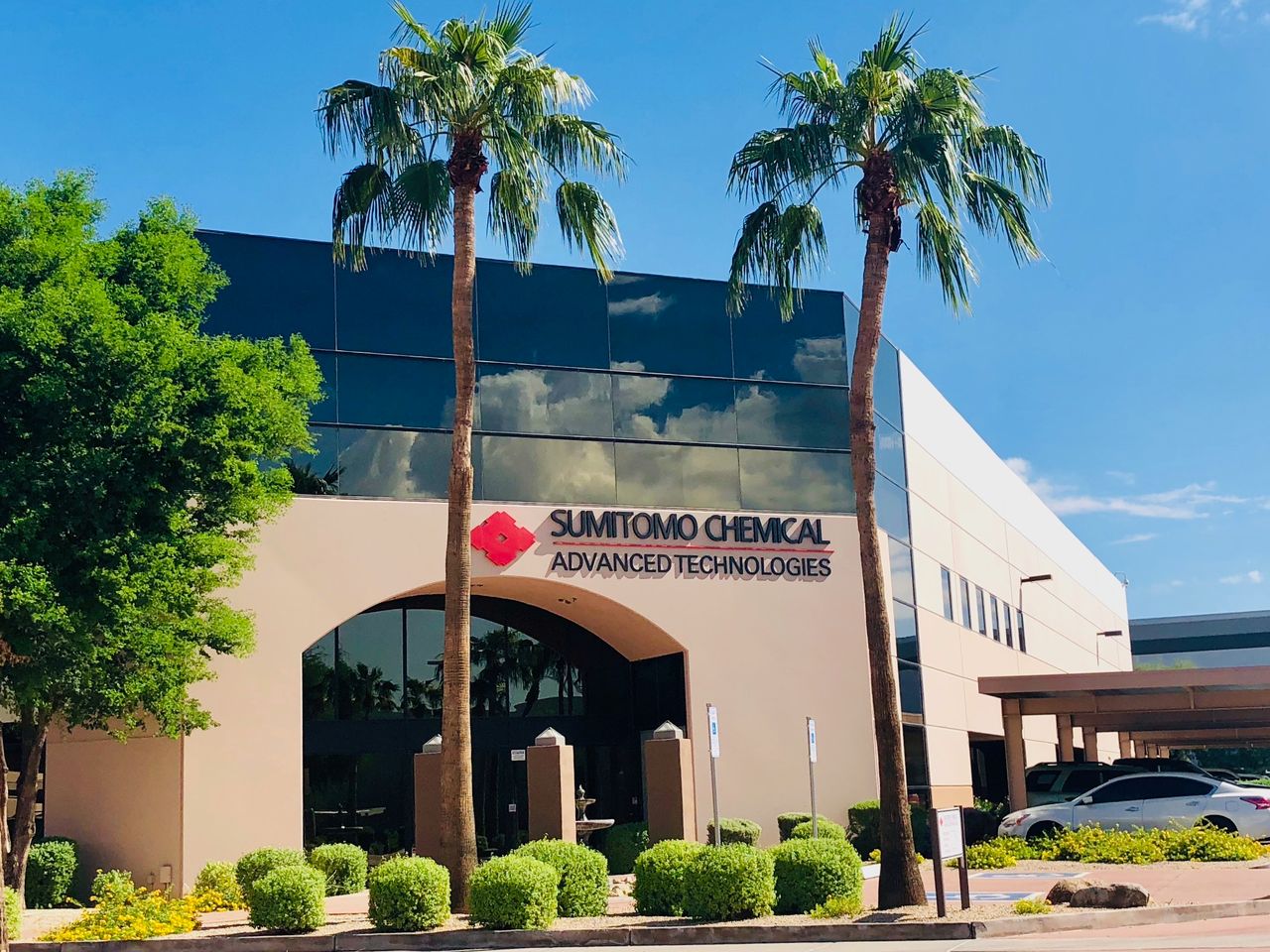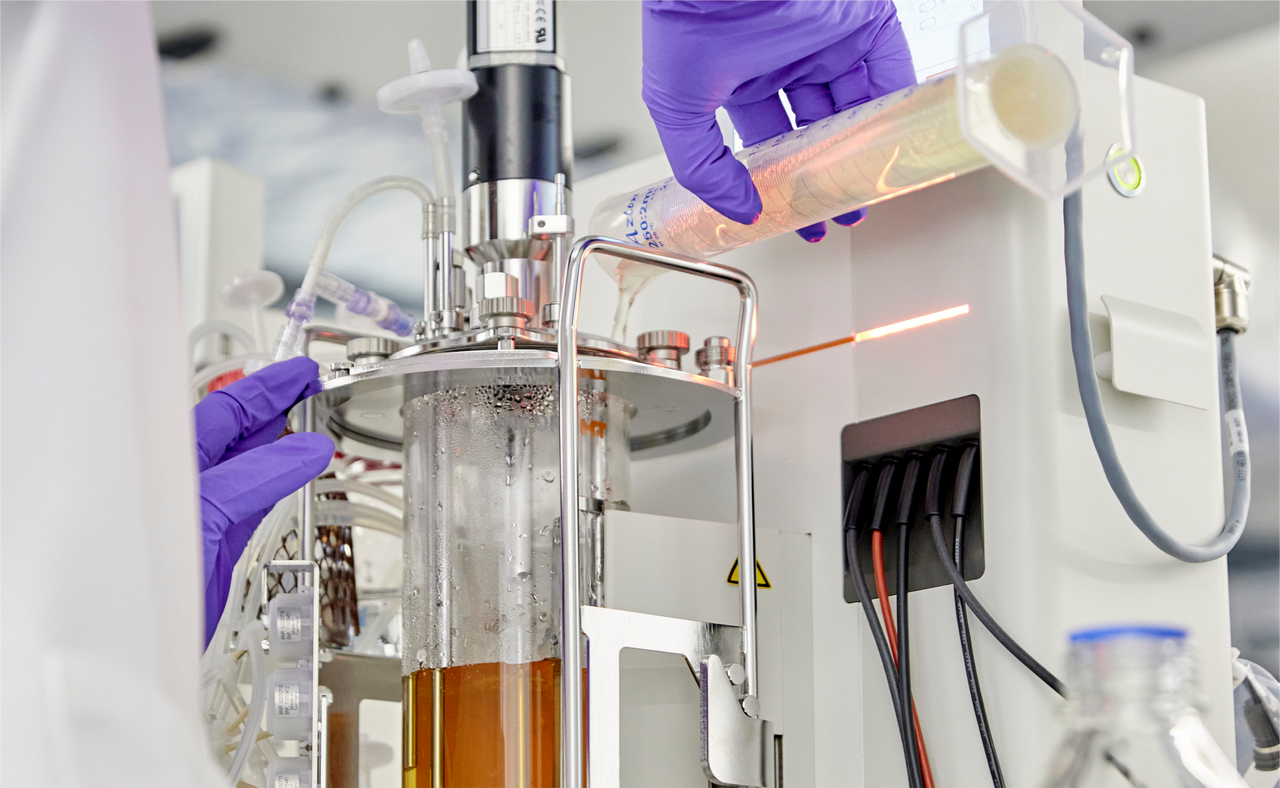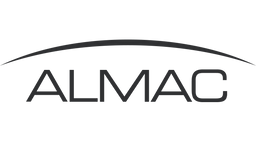Among these is Enhanced Rock Weathering (ERW), a leading technique that harnesses the natural process of carbon sequestration through the application of rock dust on land. However, despite its enormous potential to remove gigatons of carbon dioxide each year, ERW faces significant challenges in respect to global expansion.
Accelerated Rock Weathering: A potential game-changer in carbon sequestration

Vishnu Srinivasamurthy (Biocatalyst Group Lead for FabricNano) on-site with millions of tonnes of basalt rock in the north of the UK
In the urgent quest to combat climate change, innovative technologies are essential
Global Promise, but Rock Sourcing Limits Scales – Enhanced Rock Weathering (ERW)
Enhanced Rock Weathering (ERW) has garnered attention for its potential to capture carbon dioxide from the atmosphere and store it deep underground. The technique involves spreading fine rock dust, typically under 100 microns in diameter, on large tracts of land. ERW offers multiple benefits, from carbon sequestration to soil replenishment, making it an attractive option for farmers and landowners. Despite its promise, ERW faces significant hurdles, primarily concerning sourcing of suitable rock dust. The required fine particles are scarce and often only found in specific quarries or mines, posing logistical challenges for widespread adoption. This limitation has hindered the scalability of ERW, preventing its full potential from being realized.
Accelerated Rock Weathering (ARW) — A new approach born out of FabricNano Immobilization Engineering™
Recognizing the shortcomings of ERW, FabricNano sought an alternative approach to sourcing or pulverizing larger rocks into fine rock dust. Like everything at FabricNano, curiosity fueled research into the necessity for the fine rock dust… why is there a magical cut-off around 100 microns? It just so happens that 100 microns is the size of macro-pores in soil structure, so if your rock dust is under this threshold, it’ll start sinking into the soil over time. Why is that important? Because once the rock sinks into soil it becomes exposed to sub-soil biology where a flurry of acids will degrade the rock and lock-in carbon dioxide. Enter the relevance of Carbonic Anhydrase, an ancient enzyme ubiquitous in nature, which catalyzes the conversion of carbon dioxide (CO2) and water (H2O) into carbonic acid (CH2O3), thereby regulating pH using the most fundamental molecules of organic chemistry, all the while facilitating the formation of carbonates (e.g. sodium carbonate a.k.a. baking soda and calcium carbonates a.k.a. chalk) that can be used to trap carbon deep within the earth.
ARW builds upon the foundations of ERW but addresses its fundamental limitation of rock dust sourcing. In ARW, carbonic anhydrase enzymes are applied to the surface of large rock particles, which initiates hyper-local production of carbonic acid, rapid rock mineralization and the corresponding sequestration of carbon dioxide. Put simply, gigaton scale carbon sequestration via rock weathering will rely on either the rock being small enough to find the carbonic acid that biology creates endogenously in the sub-soil, or the biology being introduced directly to the larger rock that sits on the surface of the land without sinking. The latter application is more elegant, more scalable, and easier to study. By choosing to spray large rock particles with enzymes, the logistical challenge in sourcing fine rock dust and transporting it all around the world has been mitigated almost overnight.
FabricNano - Specialists in Immobilization Engineering™
Immobilizing enzymes onto anything is hard, especially so when the same rock material can vary in its morphology by region and when you want to tune the amount of enzyme you immobilize onto that rock (called “enzyme loading efficiency”). In addition to the standard immobilization questions like “what’s the liquid mix protocol for the enzyme to bind the rock?”, ARW will present a set of unique challenges. For example, how do you ensure that the enzyme functions for a full year in an open field with competing biology? Enzyme immobilization to the surface of rocks requires expertise and robust protocols.
Furthermore, measuring the effectiveness of this immobilized enzyme approach called ARW will necessitate rigorous quality control, which is why FabricNano will be embarking on a number of field trials this year with support from publicly listed corporate partners in enzyme manufacturing as well as the world’s largest environmental services company who are piloting ARW with the help of FabricNano.
As the urgency of climate action intensifies, the importance of innovative solutions like ARW cannot be overstated.
ARW — A global carbon sequestration technology made possible by Immobilization Engineering™
By harnessing the power of biology to accelerate rock weathering, ARW offers a pathway to significantly reduce carbon emissions while revitalizing agricultural landscapes. With continued research, investment, and collaboration, ARW holds the potential to reshape the global carbon sequestration landscape and mitigate the impacts of climate change.
Accelerated Rock Weathering represents a paradigm shift in carbon sequestration technology. By marrying biology with geology, through enzymes immobilized onto rocks, ARW offers a holistic approach to combating climate change, providing hope for a more sustainable future powered by enzymes.















